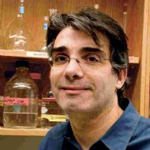 Professor
Professor
Research Areas: Neurotransmitter and neurotrophin receptors and cell signaling; learning, memory and synaptic plasticity; ion channels and synaptic function
Biography
Jacques Wadiche graduated with a B.A. in Neurobiology and Physiology from Northwestern University where he gained an appreciation for basic science research. From there he worked on nicotinic acetylcholine receptors at Baylor College of Medicine before enrolling in graduate school at the Vollum Institute at Oregon Health Sciences University in Portland, Oregon. His thesis work revealed how glutamate transporters can function as both carriers and ligand-gated ion channels. During his postdoctoral fellowship in Craig Jahr’s laboratory at the Vollum Institute, he studied a phenomenon where the release of several vesicles occur with each action potential at individual synapses. This results in a very high glutamate concentration in the synapse that can saturate postsynaptic receptors and ensure excitation of the postsynaptic neuron. His postdoctoral work also demonstrated how altering the strength of neuronal uptake can determine the extent of extrasynaptic receptor activation. He joined the faculty at UAB as an Assistant Professor in 2006. His laboratory continues to study mechanisms that regulate vesicular release and neuro-glial signaling.
The Cerebellum and Synapses
The simple tasks of reaching for a cup of coffee or fixing your gaze at an object while moving about are often taken for granted but these are the culmination of an intricate interplay between the environment and our brains. Specifically, it is the domain of the cerebellum to coordinate motor movement. This is accomplished by cerebellar connections that function to refine signals originating in other brain areas. Thus, it’s not surprising that the cerebellum has been coined a ‘neuronal machine’. Behind this machine lies its circuitry made from trillions of synapses. Synapses within the cerebellum are built to receive information and rapidly return a clear response to the nervous system. We study how synaptic transmission contributes to the timing of information processing: from vesicular release and transmitter clearance to the plasticity between cerebellar elements. Our research focuses on the details of fast synaptic transmission. Experiments in the lab incorporate a multidisciplinary approach of electrophysiological, imaging methods, and molecular biological approaches to study the activity of synapses and glutamate transporters. By combining these approaches, our goal is to understand how synaptic mechanisms refine temporal signaling. We believe that the principles learned from these studies will lead to a greater understanding of cerebellar function as well as provide a framework for the regulation of signal processing in more complex brain structures.
Our efforts are concentrated on:
(1) Mechanisms that control vesicular release.The activity of individual neurons make up the basic unit of neuronal circuit behavior. This activity is dependent on the rules that each neuron uses to integrate synaptic inputs. Knowledge of the temporal properties of synaptic transmission is required to understand synaptic integration. We aim to study how the mechanisms of synaptic transmission and the regulation of vesicular fusion affect Purkinje cell integration and firing properties. This will lead to a basis for understanding the cerebellar functional output that may be affected in motor disorders and disorders of learning and memory. The regulation of synaptic timing by vesiclular release may be a generalized mechanism for refining temporal signaling throughout the nervous system.
(2) The role of cerebellar neuro-glial signaling. The cerebellum is responsible for coordinated skilled movements and the control of muscle tone. The functional output of the cerebellum is through Purkinje cells. Each Purkinje cell receives excitatory input from thousands of parallel fibers and a single climbing fiber. These excitatory synapses are isolated from one another by Bergmann glia membranes that express a high density of glutamate transporters. In addition, glutamate released into the synaptic cleft is cleared via transporters found on the postsynaptic Purkinje cells. By recording and imaging Purkinje cells and Bergmann glia, we study how transporters can influence the strength of synaptic signals and regulate the signal transduction pathways underlying cerebellar long-lasting plasticity. We are using computer models and heterologous expression systems to study the biophysical properties of these molecules. We are also testing how disruptions of neuro-glial interactions alter behavior. By combining these methods, we aim to better understand how glutamate transporters shape synaptic signals and their physiological roles in normal and pathological states.
Cerebellar Purkinje cell (above) and Bergmann glia (below) filled through a patch pipette with Alexa 594 and imaged with a multiphoton microscope.
Contact
Email
jwadiche@uab.edu
Phone
205.996.6413
Fax
205.934.6571